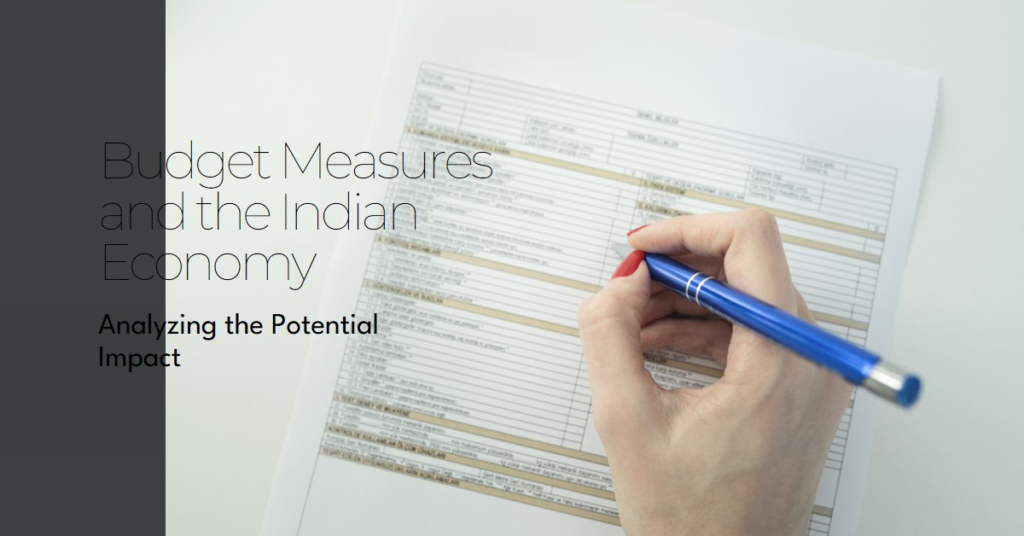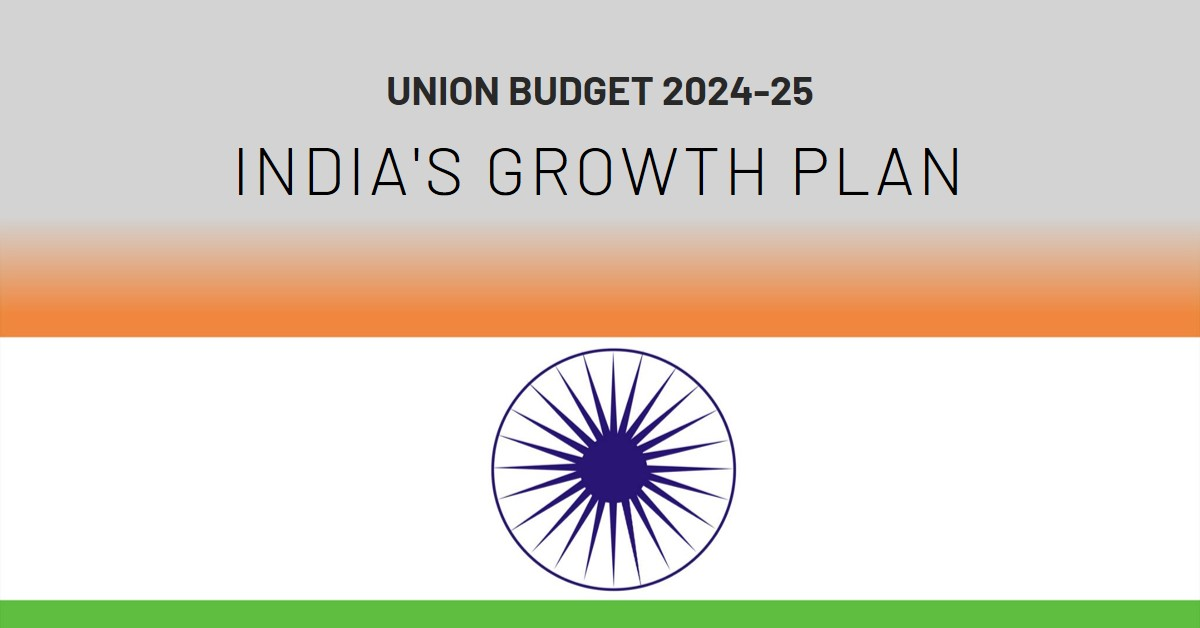The Union Budget 2024-25, presented by Finance Minister Nirmala Sitharaman, outlined the government’s fiscal roadmap for the upcoming year. Themed around ‘Viksit Bharat’ (Developed India), the budget focused on creating ample opportunities for all, with specific actions and reforms across various sectors.
Key Themes and Highlights
- Viksit Bharat: The budget emphasized India’s journey towards becoming a developed nation.
- Youth Employment and Skilling: A significant focus on creating employment opportunities for the youth, with initiatives like internships, skill development programs, and rental housing for industrial workers.
- Infrastructure Development: Continued investment in infrastructure, including transportation, urban development, and water management.
- Agriculture and Rural Development: Emphasis on boosting agricultural productivity, promoting rural entrepreneurship, and improving rural infrastructure.
- Energy Transition: Support for renewable energy, green hydrogen, and clean technologies.
- Financial Inclusion: Expanding financial services to the underserved and promoting digital payments.
- Tax Reforms: Rationalization of tax slabs and simplification of tax procedures.
Major Allocations and Announcements
- Capital Expenditure: A substantial increase in capital expenditure to boost economic growth and create jobs.
- Agriculture: Increased allocation for agriculture, with a focus on natural farming, soil health, and agricultural credit.
- Infrastructure: Significant investments in railways, roads, airports, and waterways.
- Education: Expansion of educational facilities, focus on vocational training, and digital education.
- Healthcare: Strengthening healthcare infrastructure, especially in rural areas, and promoting preventive healthcare.
- MSMEs: Support for MSMEs through credit facilities, market linkages, and technology adoption.
Fiscal Projections
The Union Budget 2024-25 outlined the government’s fiscal projections, including:
- Total receipts: ₹32.07 lakh crore
- Total expenditure: ₹48.21 lakh crore
- Net tax receipts: ₹25.83 lakh crore
- Fiscal deficit: 4.9% of GDP
Impact and Analysis
The Union Budget 2024-25 is seen as a growth-oriented budget with a focus on job creation, infrastructure development, and inclusive growth. The increased capital expenditure is expected to boost economic activity and create employment opportunities. The emphasis on agriculture and rural development is aimed at enhancing the income of farmers and improving the overall rural economy.
While the budget has been generally well-received, concerns have been raised about the fiscal deficit and the government’s ability to meet its expenditure targets.
For detailed information and analysis, please refer to the official government sources:
- India Budget: https://www.indiabudget.gov.in/
- Press Information Bureau: https://pib.gov.in/
Agriculture, Infrastructure, and Tax Reforms in Union Budget 2024-25
Agriculture
The Union Budget 2024-25 placed a significant emphasis on the agricultural sector, aiming to boost productivity, income, and sustainability. Key highlights include:
- Natural Farming: A major push towards natural farming with a target of reaching 1 crore farmers in the next two years. This involves establishing 10,000 bio-input resource centers.
- Digital Agriculture: Implementing Digital Public Infrastructure (DPI) in agriculture to cover farmers and their lands in three years. Digital crop surveys and integration with farmer and land registries were initiated.
- Research and Development: Comprehensive review of agricultural research for increased productivity and climate-resilient varieties. Funding was allocated for research and development, including private sector participation.
- Credit and Support: Expansion of Kisan Credit Cards to five more states and financial support for shrimp breeding and export.
- Infrastructure: Development of large vegetable production and supply chain clusters near consumption centers.
Infrastructure
Continuing its focus on infrastructure development, the budget allocated substantial funds for:
- Railways: Investment in railway infrastructure, including new lines, electrification, and modernization.
- Roads: Expansion of the national highway network and improvement of regional connectivity.
- Urban Development: Emphasis on affordable housing, smart cities, and urban transportation.
- Water Management: Investment in water conservation, irrigation, and flood management.
- Digital Infrastructure: Expansion of digital connectivity, including broadband and optical fiber networks.
Tax Reforms
The Union budget 2024-25 introduced several tax reforms to simplify the tax system and boost economic growth:
- New Tax Regime: The new tax regime was made more attractive with lower tax rates and increased exemptions.
- Tax Slabs: Changes in tax slabs to provide relief to taxpayers.
- Customs Duty: Reduction in customs duty on certain items to reduce input costs for industries.
- Capital Gains Tax: Modifications to capital gains tax to promote investments.
Overall, the Union Budget 2024-25 aimed to create a conducive environment for agricultural growth, improve infrastructure, and simplify the tax system to boost economic development and create employment opportunities.
Potential Impact of Budget Measures on the Indian Economy

The Union Budget 2024-25, with its focus on agriculture, infrastructure, and tax reforms, is expected to have a significant impact on the Indian economy. Here’s a breakdown of the potential outcomes:
Agriculture
- Increased agricultural productivity: The emphasis on natural farming, research, and digital agriculture can boost yields and reduce input costs.
- Rural income growth: Higher agricultural income can lead to increased rural consumption, driving overall economic growth.
- Export potential: Improved agricultural productivity can enhance India’s export competitiveness.
- Job creation: Investments in agriculture and allied sectors can generate employment opportunities in rural areas.
Infrastructure
- Economic growth catalyst: Increased infrastructure spending can stimulate economic activity across various sectors.
- Improved connectivity: Better transportation and logistics networks can reduce costs for businesses and consumers.
- Urban development: Investments in urban infrastructure can enhance the quality of life and attract investments.
- Job creation: Infrastructure projects can create a large number of employment opportunities.
Tax Reforms
- Increased disposable income: Lower tax rates can boost consumer spending, driving economic growth.
- Improved ease of doing business: Simplified tax procedures can attract more investments.
- Formalization of the economy: Tax incentives can encourage businesses to move into the formal sector.
Overall Impact
A combination of these factors can lead to:
- Higher GDP growth: Increased investment, consumption, and exports can propel economic growth.
- Job creation: The focus on agriculture, infrastructure, and tax reforms can generate employment opportunities.
- Improved living standards: Better infrastructure and increased income can enhance the quality of life for citizens.
- Reduced fiscal deficit: Increased tax revenue and efficient expenditure management can help in reducing the fiscal deficit.
However, the success of these measures depends on effective implementation and addressing challenges such as land acquisition, corruption, and infrastructure bottlenecks.
It’s important to note that the actual impact of these measures will unfold over time and may be influenced by global economic conditions and other factors.
Potential Impact and Challenges
Impact on Inflation
The Union Budget 2024-25, with its focus on increased government spending, has the potential to influence inflation.
- Positive impact:
- Increased agricultural production can lead to lower food prices, a significant component of the consumer price index (CPI).
- Improved infrastructure can enhance supply chain efficiency, reducing transportation costs and potentially lowering prices.
- Negative impact:
- Substantial government spending can lead to demand-pull inflation if not managed carefully.
- Rising input costs due to infrastructure projects could increase production costs, leading to cost-push inflation.
The overall impact on inflation will depend on the balance between these factors and the effectiveness of monetary policy measures taken by the Reserve Bank of India (RBI) to control inflation.
Challenges in Implementation
Several challenges could hinder the implementation of the budget’s measures:
- Land acquisition: Acquiring land for infrastructure projects can be time-consuming and fraught with legal and political hurdles.
- Corruption: Inefficient implementation due to corruption can lead to cost overruns and delays in project completion.
- Financing: Ensuring adequate funding for large-scale infrastructure projects can be a challenge.
- Skill shortage: A shortage of skilled labor can hamper the pace of project execution.
- Global economic conditions: External factors like global economic slowdown or geopolitical tensions can impact the budget’s objectives.
- Climate change: Extreme weather events can disrupt agricultural production and infrastructure projects.
Addressing these challenges will be crucial for the successful implementation of the budget’s initiatives and maximizing their impact on the economy.
Land Acquisition: A Major Hurdle
Land acquisition is one of the most significant challenges in implementing large-scale infrastructure projects in India. It often leads to delays, cost overruns, and social unrest.
Potential Solutions
- Transparent and Fair Compensation: Providing timely and adequate compensation to land owners can significantly reduce resistance.
- Land Pooling: Encouraging land pooling can expedite the acquisition process and create larger land parcels for efficient project implementation.
- Public-Private Partnerships (PPPs): Involving private sector expertise in land acquisition can streamline the process.
- Land Banks: Creating land banks for future infrastructure projects can reduce acquisition time when needed.
- Stronger Rehabilitation Packages: Comprehensive rehabilitation packages for displaced people can mitigate social unrest.
- Legal Reforms: Simplifying land acquisition laws and providing clear guidelines can expedite the process.
By addressing these issues, the government can create a more conducive environment for infrastructure development while ensuring the rights of affected landowners are protected.
Land Acquisition Solutions
Land Pooling: A Comprehensive Approach
Land pooling has emerged as a promising solution to the land acquisition challenge. It involves:
- Consolidation: Bringing together small land parcels into larger, contiguous plots.
- Development: Developing the pooled land into a mixed-use area with residential, commercial, and infrastructure components.
- Distribution: Redistributing the developed land among original landowners based on their initial land contribution.
Benefits of Land Pooling:
- Win-win situation: Both landowners and the government benefit from increased land value and infrastructure development.
- Reduced displacement: Minimal displacement of people as landowners become stakeholders in the development.
- Faster project implementation: Streamlined process compared to traditional land acquisition.
- Infrastructure development: Ensures the development of essential infrastructure within the project area.
Challenges and Considerations:
- Complex negotiations: Requires careful negotiation and consensus building among landowners.
- Expertise: Requires skilled professionals for planning, development, and distribution.
- Legal framework: Clear and supportive legal framework is essential for successful implementation.
Other Potential Solutions
- Joint Ventures with Landowners: The government can partner with landowners to develop the land, sharing profits and risks.
- Land Banks: Establishing government-owned land banks can provide a ready source of land for future projects.
- Digital Land Records: Accurate and accessible land records can streamline the acquisition process and reduce disputes.
- Community Engagement: Involving local communities in the planning and development process can increase acceptance and reduce resistance.
By adopting a combination of these approaches and addressing the specific challenges of each region, India can overcome the land acquisition hurdle and accelerate infrastructure development.
Note: This is a general overview. For precise figures and detailed analysis, please refer to the official budget documents.
Disclaimer: While this article provides a comprehensive overview based on available information at the time of writing, it’s essential to refer to official government sources for the most accurate and up-to-date details.
#epicinfinite #epicarticle #epicblog
What are your thoughts? Share your opinions and insights in the comments below.










